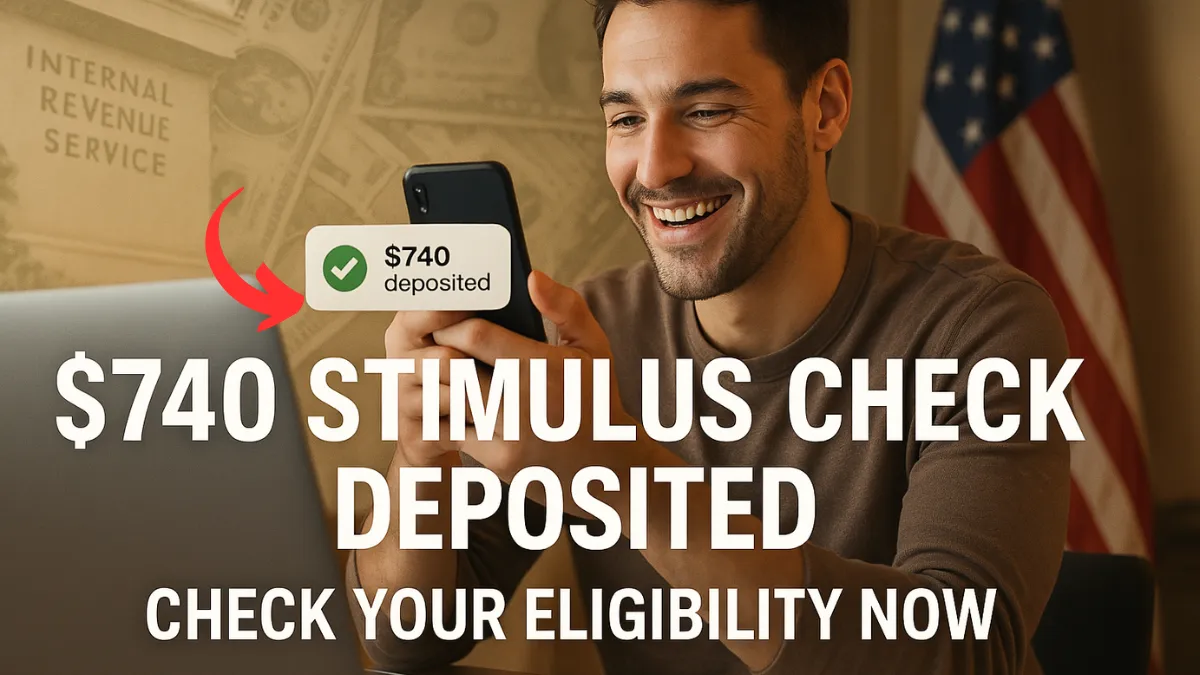$740 Stimulus Payments: What You Need to Know
A new round of $740 stimulus payments is being sent out to help Americans dealing with financial challenges. These payments are part of the government’s effort to support people who are still recovering from the effects of inflation and other economic issues.
When Will You Get Your Payment?
The U.S. Treasury has already started sending direct deposits to eligible people. Most people should see the money in their accounts within 14 business days.
If you don’t have direct deposit set up, you’ll receive a paper check or a prepaid debit card by mail. These will be sent out over the next four to six weeks.
A Treasury spokesperson said, “We’re working to get the money to eligible Americans as quickly and safely as possible.”
Who Is Eligible?
This round of payments has more specific rules than previous ones. Here’s who qualifies:
- Income Limits:
- Single individuals who made up to $75,000
- Married couples who made up to $150,000
- Payments get smaller for incomes above these amounts and stop completely at $100,000 for single filers or $200,000 for married couples.
- Tax Returns: You need to have filed a 2023 or 2024 tax return.
- Dependents: Some adult dependents, like college students or adults with disabilities, may now qualify.
- Citizenship: You must have a valid Social Security number and meet residency rules.
Special Groups That Will Get Payments Automatically
Some people don’t need to do anything to get their money:
- Social Security and SSI recipients
- Veterans getting VA benefits
- People with very low income who don’t usually file taxes (They can use a simple tool on the IRS website to claim their payment.)
How to Check Your Payment Status
The IRS has brought back the “Get My Payment” tool. You can use it to:
- Check when your payment is coming
- See how it will be delivered (bank deposit or mail)
- Update your bank information if needed
To use the tool, go to irs.gov and click on “Get My Payment.” You’ll need:
- Your Social Security number
- Date of birth
- Address and ZIP code
Haven’t Received Your Payment?
If the tool says your payment was sent but you didn’t get it, here are some possible reasons:
- Bank Delays: It might take a few business days to show up in your account.
- Wrong Info: If your bank account changed since your last tax return, the payment might have gone to an old account.
- Mail Delays: Paper checks and debit cards can take longer to arrive.
If it’s been over two weeks (for direct deposit) or four weeks (for mail), contact the IRS or file Form 3911 to trace your payment.
Why Are These Payments Being Given?
These payments are part of a broader recovery plan to help families manage:
- High inflation
- Unstable job markets in some areas
- Rising housing costs
Experts say that most people use the money for essentials like:
- Rent or mortgage
- Food and groceries
- Utility bills
- Medical needs
- Paying down debt
Watch Out for Scams
Scammers may try to trick people into giving away personal information. Remember:
- The IRS won’t email, text, or DM you about your payment
- You will never be asked to pay a fee to get your money
- Avoid anyone asking for gift cards or bank info
- No one can threaten you or demand payment
Report suspicious messages to the Federal Trade Commission or the Treasury Inspector General.
FAQs
1. How much is the stimulus payment?
Each eligible person will receive $740.
2. Do I need to apply to get the payment?
Most people will receive it automatically if they’ve filed their taxes or get government benefits. Non-filers with low income may need to use the IRS tool online.
3. Can adult dependents receive this payment?
Yes, some adult dependents like college students or adults with disabilities may now qualify.
4. What if I moved or changed my bank account?
You should update your information using the IRS “Get My Payment” tool or contact the IRS if your payment goes to the wrong place.
Conclusion
These $740 stimulus checks are a lifeline for many families facing economic hardship. While not a long-term solution, they offer important relief for those struggling with rising costs. Be sure to stay updated through the official IRS website and avoid scams by only trusting information from .gov websites. If you’re eligible, this support is here to help you get through tough times.
